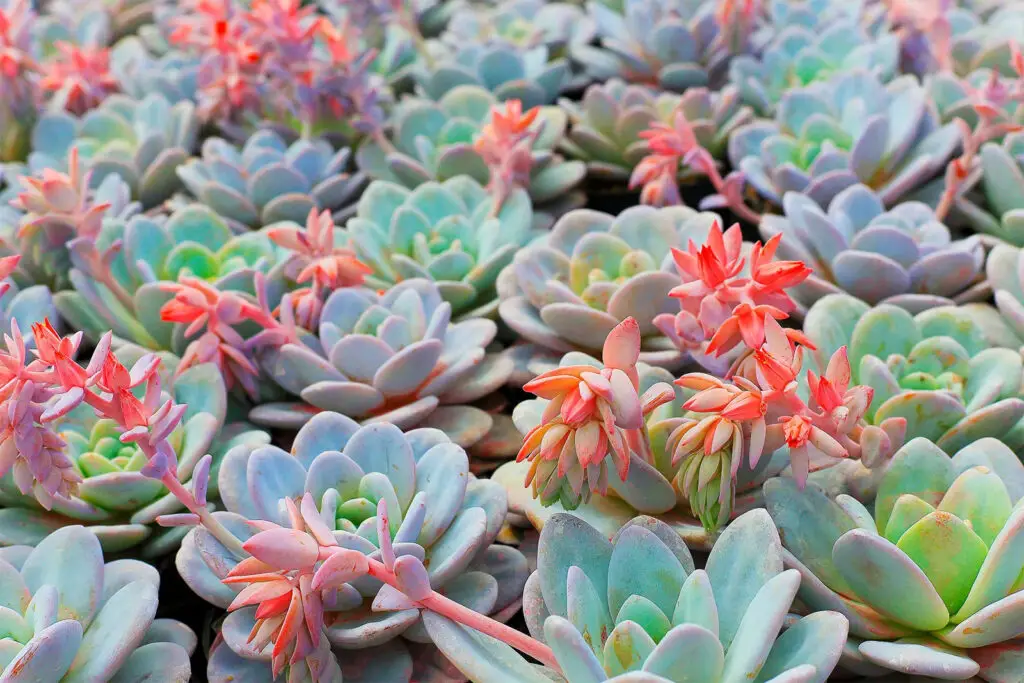
What is a succulent?
Succulents are a diverse group of plants with unique forms, colors, and blooms that are easy to care for indoors and outdoors. They are specialized plants that store water in their leaves and/or stems, making them adapted to harsh climates where water is scarce or sporadically available. Succulents are characterized by swollen leaves, pads, or stems, and their appearance varies from species to species. The exact classification of a plant will depend on experts, but all types of succulents are pleasing to the eye, minimal in care, and produce delightful surprises during their life cycle. Succulents are native to arid regions, forest settings, high alpine regions, coasts, and dry tropical areas. There are over 50 families of succulents, with xerophytic plants thriving in dry areas and halophytic types in boggy saline soil. The xerophytic form is the best known and widely available as house or garden plants.
| Common name | Succulents |
| Native | South Africa. It can grow on every continent except Antarctica. |
| Climate | 48-50 degrees Celsius |
| Temperature | Temperate climate |
| Soil | Good drainage soil |
| Sunlight | A few hours of sun a day |
| Propagation | By leaf or stem cuttings |
| Maintenance | Low maintenance |
| Toxicity | Most succulents are not toxic |
You can also use these articles
Growing succulents
Succulent plants thrive in well-draining soil or compost, with a preference for slightly acidic soil. They are slow-growing and prefer sunny spots with well-drained soil. Succulents struggle in poorly drained, heavy soils, so they are best suited to containers. Agaves, particularly Agave americana, are best planted away from paths due to their dangerous spiked leaves. They prefer south or south-east-facing windowsills for house plants.
To improve drainage, add horticultural grit before planting, avoiding planting too deeply as fleshy leaves will rot in wet soil. Terracotta pots with drainage holes and grit are ideal for drought-loving succulents, as they warm up quickly in the sun and dry out quickly after watering. Most succulents have fibrous roots, so they can be planted in shallow pots.
For large agaves, opt for a soil-based compost, as they need a heavier compost to anchor their roots. Wear gloves when handling spiked agaves, as their leaves are sharp. Always watch your eyes when handling spiked agaves.

Growing succulents in pots
Succulent container gardening is a rewarding and easy-to-maintain hobby that requires minimal watering. These plants, which have evolved in harsh conditions, require minimal water to thrive. To start, choose the right container, soil, and plants. Cover drainage holes with plastic window screening or landscape fabric to keep soil in the container while allowing excess water to escape. Choose shallow containers with drainage holes or drill holes at the bottom to prevent standing water from killing the plant.
Use a suitable potting mix, such as “cactus mix” or “succulent mix,” or create your own mix by blending regular potting soil, coarse sand, and perlite or pumice. Select plants with varying light and care requirements, as some species may remain healthy even without optimal conditions. Research the specific needs of each species to ensure they will thrive with the light conditions, temperatures, and level of care provided.
Some easy-to-grow succulents include aloe, jade, zebra cactus, hens and chicks, living stones, string of pearls, and donkey’s tail. Test fit the plants by placing them in their nursery pots and moving them until satisfied with the arrangement. Plant the container by placing the plants back into the container one by one, gently packing additional potting soil around each plant, keeping the soil at the same level as the plants were growing in their pots.
Avoid overcrowding by considering the mature size of the plants when spacing plants in the container. Overcrowded containers may grow too large, leading to root damage and death.
In summary, growing a succulent container garden is a rewarding and time-consuming hobby that requires careful selection of the right container, soil, and plants.
Question: Can succulents stay outside in rain?
Do succulents need sun or shade?
Succulents require 4-6 hours of daily indirect sunlight to thrive, but they can still thrive in dark environments like shipping, decorating, or storing. However, no succulent will survive without light, just like any other indoor plant. Most succulents will live without deterioration for 10-14 days if placed in a place with little or no light, while some shade-tolerant plants may live longer.
To make indoor succulents last longer without light, keep their time in the dark to less than ten days to avoid overstressing them. Watering them in the dark, including misting, is ineffective and can make fungus diseases and rot easier to spread. Additionally, leaving space between them can help prevent cramping and lower the amount of moisture in the air around the plant.
If you need to keep succulents in low or no light for more than 14 days, consider using plant-growing lights, such as cool daylight LED lights with 1000-2000 lumens. These lights will help keep the plants happy and healthy, even if they are kept in a dark location without direct sunlight.
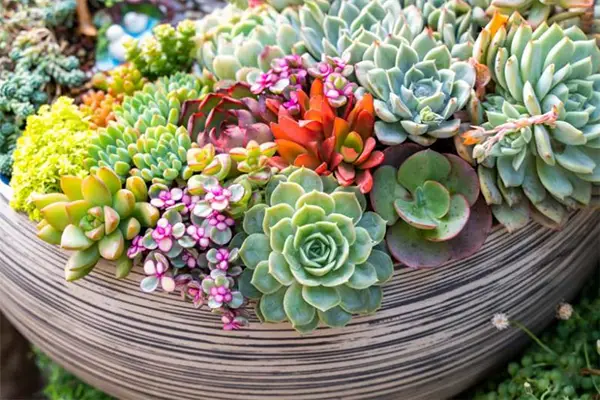
How often do you water a succulent?
Retro Den recommends watering a succulent every other week during non-winter months, and once a month during winter when temperatures are below 40 degrees Fahrenheit. Succulents with smaller leaves may need more frequent watering due to their water storage capacity. Happysprout.com recommends using the “soak-and-dry” method, which involves thoroughly soaking the succulent and waiting for it to dry before watering again. Over-watering can lead to a succulent’s demise, so it’s crucial not to let the succulent stand in water. Succulents can recover from under-watering, but over-watering can lead to their death.
Are succulents good or bad for you?
Succulents, like snake plant and aloe vera, produce oxygen throughout the night, providing a refreshing air for better sleep. They also purify the air by removing toxins, such as benzene and formaldehyde found in rugs, cigarette smoke, grocery bags, books, and ink. Plants release about 10% of the moisture in the atmosphere, which can help prevent diseases like dry skin, colds, sore throat, and dry cough. A study by Agricultural University of Norway found a 60% decrease in sickness rates in offices with plants.
Studies have shown that plants improve concentration, attentiveness, and brain capabilities, with memory retention improving by up to 20% when plants are present. Small plants like succulents are particularly beneficial at work, as they don’t take up much space on your desk. Succulents also aid in quicker recovery by reducing flu-like symptoms, headaches, fever, and coughs. According to researchers at Kansas State University, hospital patients with plants in their rooms required less pain medication, had lower blood pressure and heart rate, and experienced less fatigue and anxiety. Overall, plants play a crucial role in maintaining a healthy environment and promoting overall well-being.
What is the purpose of a succulent plant?
Succulents are a popular and easy-to-raise indoor plant that can bring a part of nature into your home. These plants, which store water in their stems and leaves, have several benefits.
1. They can brighten a home in any climate by growing in various environments, such as seaside cliffs, humid jungles, bone-dry deserts, and frigid mountains. In homes, they thrive in room temperature environments, adding greenery and blooming in season.
2. They can help purify the air by removing volatile organic compounds (VOCs) from the air through water vapor emission. This process converts these contaminates to plant food, purifying the air in your home.
3. They improve the humidity of your home by releasing water, which can improve common health complaints like sore throats, common colds, dry coughs, and itchy skin.
4. They add fresh oxygen to your environment by producing oxygen continuously, freshening the air and improving breathing. Position plants in rooms where you need an extra breath of fresh air, such as bathrooms or kitchens.
5. They can improve focus by increasing pain tolerance, as evidenced by horticultural therapy research conducted by the University of Kansas. Patients seemed to need less pain medication when they had plants in their hospital rooms.
6. They enhance memory by improving cognitive benefits, such as memory retention, which leads to enhanced work and school performance. Place succulents in areas where your mind is active, such as the study or library, home office, or any room where your mind is focused.
In summary, growing succulents in your home offers numerous benefits, including brightening your home in any climate, purifying the air, improving humidity, enhancing focus, increasing pain tolerance, and enhancing memory.

types of succulents
Succulents are a popular trend in gardens, weddings, and home decor due to their ability to thrive in dry climates, particularly in Africa or Central America. They store water in their leaves, allowing them to withstand long hours in the sun and minimal watering. Succulents are known for their low maintenance and long lifespans, making them ideal for those who work long hours or are not adept at plant care. They add structure and vibrance to gardens and homes, making them suitable for home office corner plants or vibrant garden pops. However, these drought-resistant plants have preferences for their location. To help understand the different types of succulents and their best growing locations, a list of the 20 most popular types has been compiled, categorized by indoor and outdoor varieties, and created with visual guides. Succulent plants are trendy due to their versatility and versatility, making them suitable for various settings such as home offices and children’s bedrooms. They thrive in dry, low-humidity environments and can adapt to lower light levels, making them ideal for home decor. Pantone’s color of the year, Greenery, is also a trend. The top 10 most popular indoor succulents include the succulents that grow best in dry, low-humidity conditions, and those that prefer direct sunlight.
Burro’s Tail

Crown of Thorns (euphorbia milii)
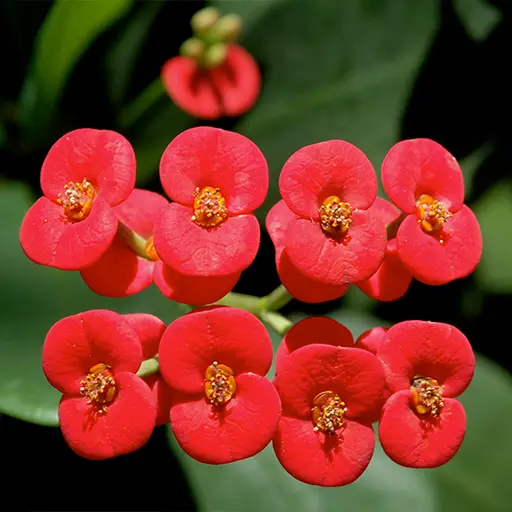
Flaming Katy (kalanchoe blossfeldiana)
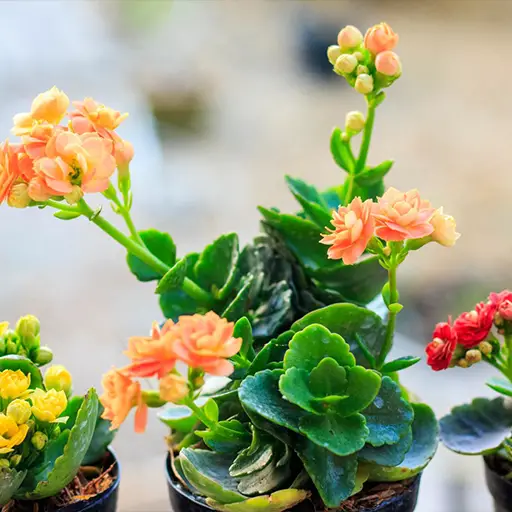
Jade Plant ( crassula ovata)

Aloe Vera (aloe vera)

Panda Plant (kalanchoe tomentosa)
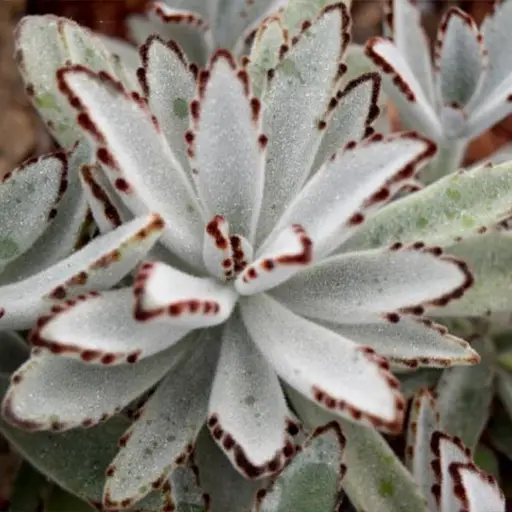
Pincushion Cactus ( Mammillaria crinita)

Rose (spurious seed)

Snake Plant ( sansevieria trifasciata)

Zebra Plant (haworthia fasciata)

Care for succulents
Succulents require about six hours of sunlight per day, depending on the type of plant. They can survive with full shade or a sheer curtain for shade. Rotating the plant frequently helps them stand up straight and avoids scorching in direct sunlight. Watering according to the season is crucial for succulent growth, as they need more water during spring and summer. Test the soil with a finger and let it dry between waterings to prevent over-watering.
Choosing a container with drainage is essential for succulents to prevent rot. Terra-cotta pots are ideal for beginners, but as you grow more comfortable with plant care, consider upgrading to terrariums or other containers. Plant the succulents in the right soil, which should be well-draining and porous and sandy. You can buy store-bought or DIY potting soil, combining potting soil with sand, pumice, or perlite. Be gentle when repotting, as succulent roots are fragile.
Water the soil directly, soaking it until it runs out of the drainage holes. Avoid using a spray bottle to avoid brittle roots and moldy leaves. Place pots in a pan of water and allow the water to absorb through the drainage hole. Once the top of the soil is moist, remove from the pan.
Keep the plants clean by wiping off the leaves and spines gently with a damp cloth. Pests like gnats and mealybugs can be managed by spraying the soil with 70% isopropyl alcohol. Overwatering and overfertilizing can also cause mealybugs.
In summary, keeping your succulents healthy requires proper light, rotation, proper watering, and proper soil care. By following these guidelines, you can ensure your succulents thrive and thrive in their natural environment.
FAQ
Succulents can thrive in containers thanks to their generally compact size and hardiness. But they must have a container with drainage holes, as well as well-draining soil.
Unglazed clay is an optimal material for potting succulents. The walls will allow excess soil moisture to evaporate through them. The container also should have sufficient drainage holes.
Most succulents don’t need a deep pot, but be sure to check the individual growing requirements and mature size of your succulent species. A pot that is too deep can lead to soggy soil and root rot.

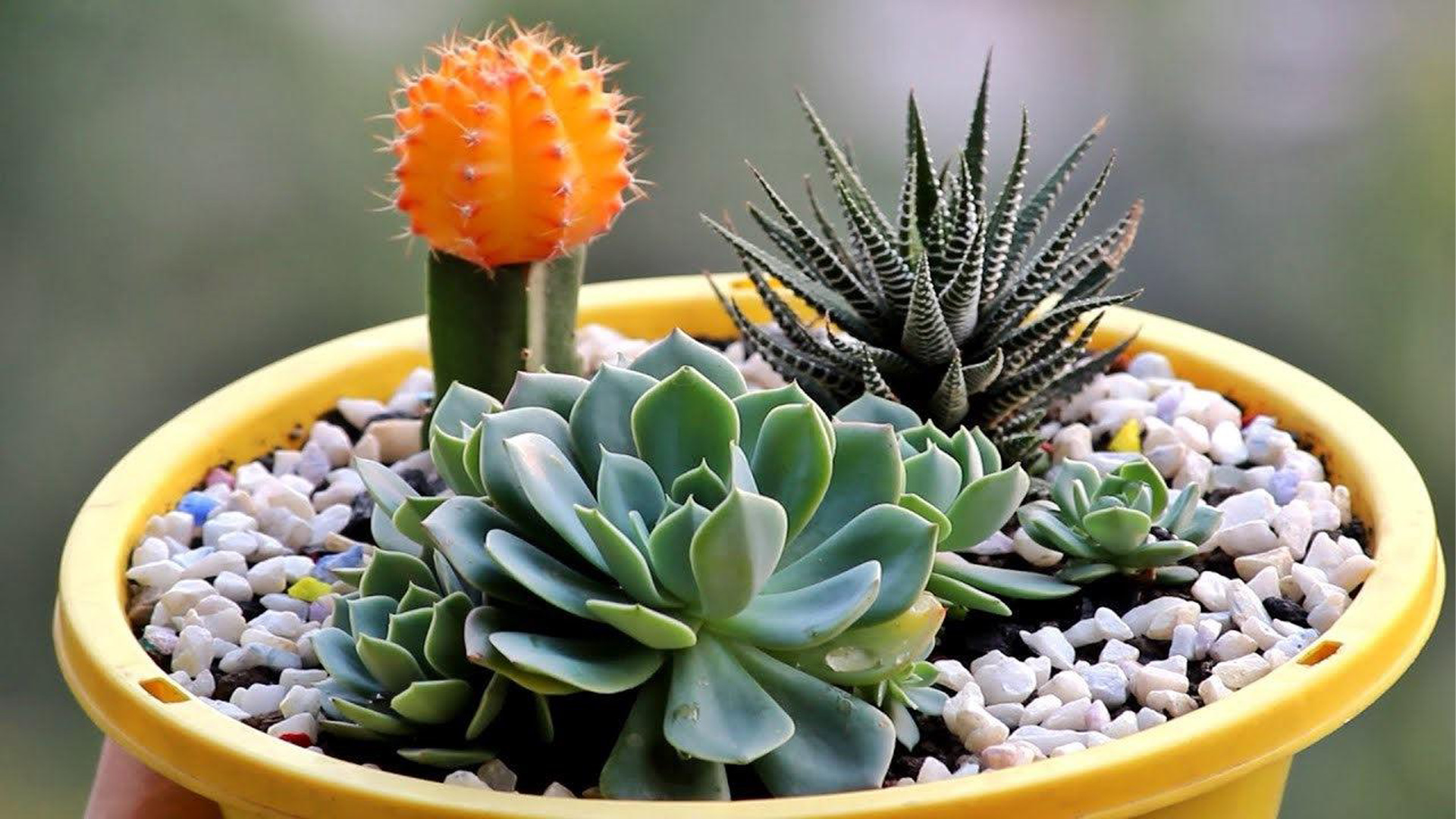



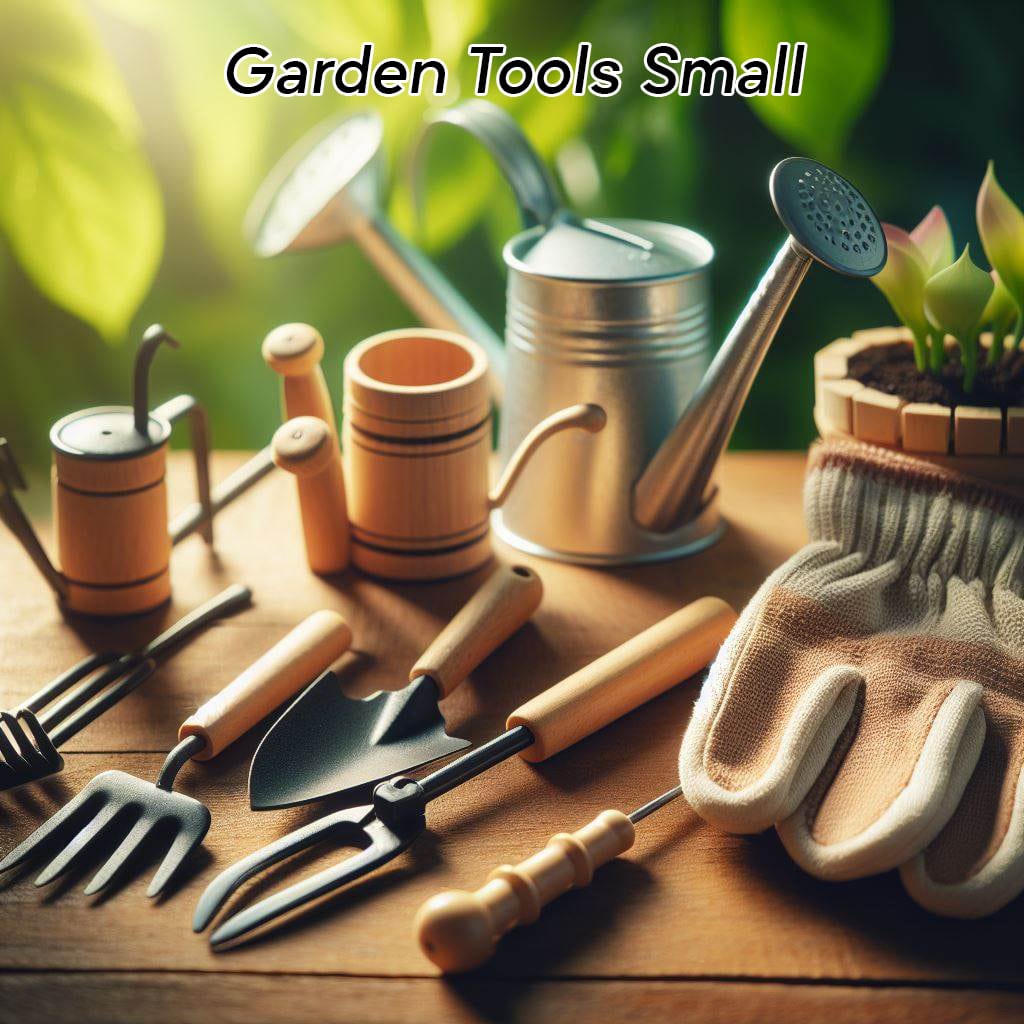





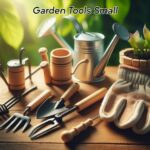
4 comments on “Succulents”